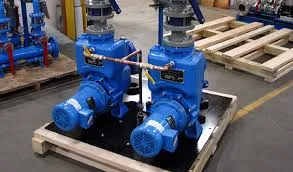English
- Afrikaans
- Albanian
- Amharic
- Arabic
- Armenian
- Azerbaijani
- Basque
- Belarusian
- Bengali
- Bosnian
- Bulgarian
- Catalan
- Cebuano
- Corsican
- Croatian
- Czech
- Danish
- Dutch
- English
- Esperanto
- Estonian
- Finnish
- French
- Frisian
- Galician
- Georgian
- German
- Greek
- Gujarati
- Haitian Creole
- hausa
- hawaiian
- Hebrew
- Hindi
- Miao
- Hungarian
- Icelandic
- igbo
- Indonesian
- irish
- Italian
- Japanese
- Javanese
- Kannada
- kazakh
- Khmer
- Rwandese
- Korean
- Kurdish
- Kyrgyz
- Lao
- Latin
- Latvian
- Lithuanian
- Luxembourgish
- Macedonian
- Malgashi
- Malay
- Malayalam
- Maltese
- Maori
- Marathi
- Mongolian
- Myanmar
- Nepali
- Norwegian
- Norwegian
- Occitan
- Pashto
- Persian
- Polish
- Portuguese
- Punjabi
- Romanian
- Russian
- Samoan
- Scottish Gaelic
- Serbian
- Sesotho
- Shona
- Sindhi
- Sinhala
- Slovak
- Slovenian
- Somali
- Spanish
- Sundanese
- Swahili
- Swedish
- Tagalog
- Tajik
- Tamil
- Tatar
- Telugu
- Thai
- Turkish
- Turkmen
- Ukrainian
- Urdu
- Uighur
- Uzbek
- Vietnamese
- Welsh
- Bantu
- Yiddish
- Yoruba
- Zulu
Telephone: +86 13120555503
Email: frank@cypump.com
Nov . 05, 2024 05:31 Back to list
slurry handling pumps
Understanding Slurry Handling Pumps
Slurry handling pumps play a crucial role in various industrial applications, particularly in sectors like mining, construction, and wastewater treatment. These specialized pumps are designed to transport slurries—mixtures of solid particles and liquids that can be abrasive and viscous. The ability to efficiently move such challenging materials is essential for operational efficiency and cost-effectiveness in industries that rely on slurry transport.
What is a Slurry?
A slurry is a mixture made up of solid particles and a liquid. The solids can vary widely in size, composition, and concentration, which means that a one-size-fits-all pump solution is rarely applicable. Common examples of slurries include cement, coal ash, mineral concentrates, and other waste materials generated from industrial processes. The properties of slurries, like viscosity, density, and particle size distribution, significantly influence the choice of pump and its performance.
Types of Slurry Handling Pumps
There are several types of pumps used for slurry handling, each designed with specific characteristics to handle different applications
. The most common types include1. Centrifugal Pumps These pumps use rotational energy to move slurries and are suitable for low to medium viscosity slurries. They are often used in applications where a constant flow is required. However, centrifugal pumps may struggle with highly abrasive or viscous materials, which can cause wear and lead to pump failures.
2. Positive Displacement Pumps Unlike centrifugal pumps, positive displacement pumps move slurry by trapping a fixed amount of the mixture and forcing it through the discharge. These pumps are better suited for higher viscosity slurries and can handle abrasive solids more effectively.
3. Submersible Slurry Pumps Designed for submerged applications, these pumps can handle high solids content and are often used in mining and dredging. They provide a space-effective solution as they can be placed directly in the slurry.
slurry handling pumps

4. Slurry Diaphragm Pumps These pumps use a diaphragm to create a pumping action and are particularly useful for handling chemically aggressive slurries. They provide a good seal and can prevent harmful materials from leaking into the environment, making them ideal for sensitive applications.
Key Considerations When Selecting a Slurry Pump
When choosing a slurry handling pump, several factors need to be taken into account
- Slurry Characteristics Understanding the properties of the slurry, including its density, viscosity, and particle size, is essential in selecting the right pump. This helps ensure that the pump can handle the material without excessive wear or blockage.
- Application Requirements The operational demands, such as flow rate, pressure, and distance of transport, will influence the choice of pump. Different applications may require different pump types or configurations.
- Material Compatibility Since slurries can be abrasive or corrosive, it’s crucial to choose a pump that is constructed from materials resistant to erosion and chemical degradation. Stainless steel, nickel alloys, and specialized elastomers are common materials used in slurry pumps.
- Maintenance and Reliability Given the rigors of handling slurries, pumps should be designed for ease of maintenance and high reliability. Features such as quick-change wear parts and self-cleaning designs can reduce downtime and maintenance costs.
Conclusion
In summary, slurry handling pumps are integral to many industrial applications, providing efficient transport for challenging mixtures. With various types of pumps available, selecting the correct one requires a thorough understanding of the slurry characteristics, application needs, material compatibility, and maintenance requirements. Investing in the right slurry handling pump can lead to improved operational efficiency, reduced costs, and enhanced overall productivity. As industries continue to innovate and evolve, the design and technology behind slurry pumps will likely advance, making them even more effective for future applications.
-
ISG Series Vertical Pipeline Pump - Chi Yuan Pumps Co., LTD.
NewsJul.30,2025
-
ISG Series Vertical Pipeline Pump - Chi Yuan Pumps Co., LTD.|energy-efficient fluid handling&industrial durability
NewsJul.30,2025
-
ISG Series Vertical Pipeline Pump - Chi Yuan Pumps | Advanced Engineering&Industrial Efficiency
NewsJul.30,2025
-
ISG Series Pipeline Pump - Chi Yuan Pumps | High Efficiency, Energy Saving
NewsJul.30,2025
-
ISG Series Vertical Pipeline Pump-Chi Yuan Pumps|High Efficiency&Reliable Performance
NewsJul.29,2025
-
ISG Series Vertical Pipeline Pump|High Efficiency&Low Noise
NewsJul.29,2025










